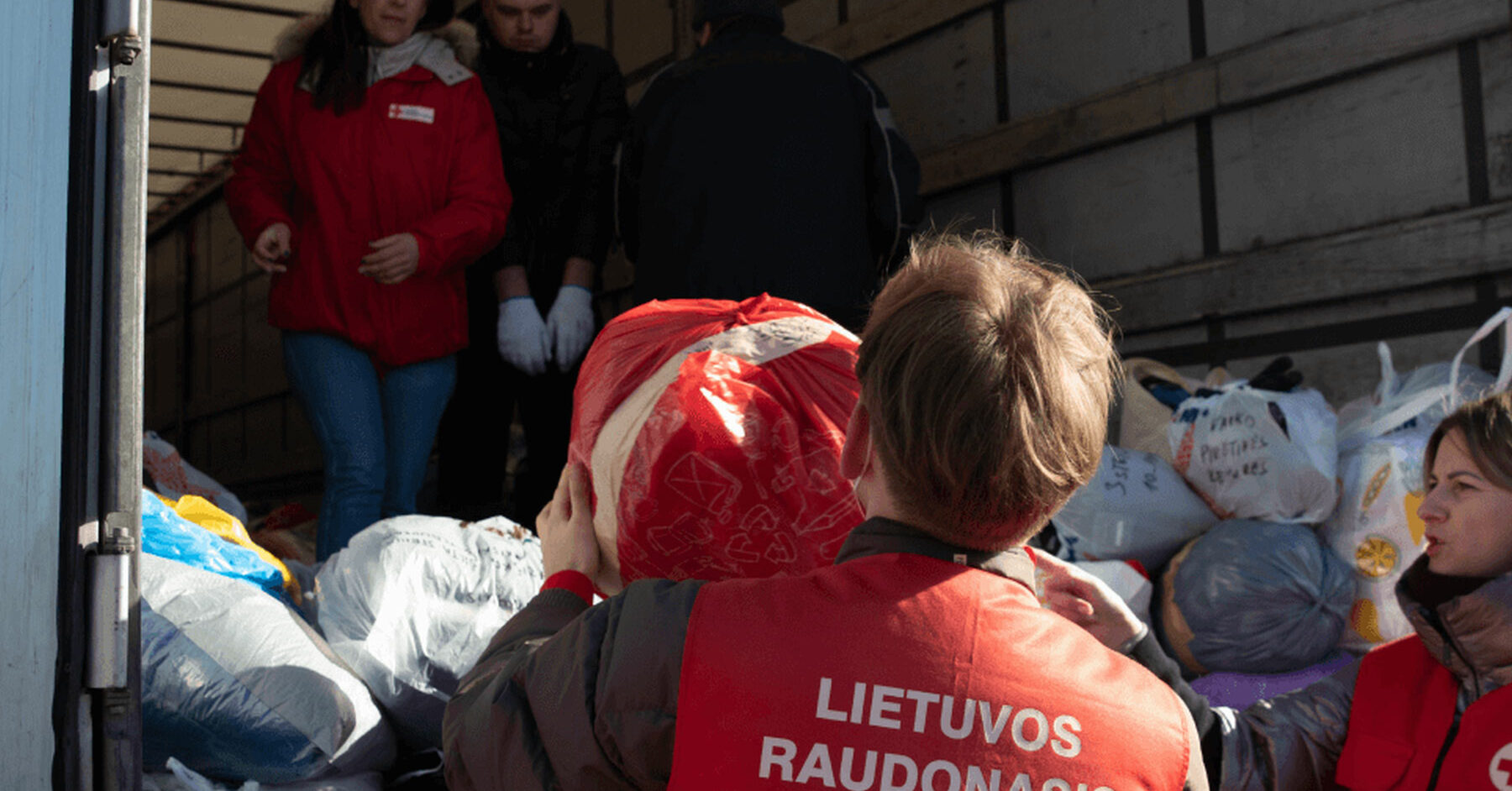When disaster strikes, even one extra day without aid can cost too much. But before help reaches the hands of those in need, it travels a long and complex path. The Lithuanian Red Cross (LRC) faces the daily challenge of getting assistance to people who need it here and now. If even one link in that chain fails, the entire support system can collapse. The people who organize this humanitarian effort share what it takes to make such a process work.
The road to help is rarely straight
Every day, the LRC coordinates the movement of relief shipments across Lithuania. Items collected from residents or partners travel from central warehouses to humanitarian aid points, regional branches, and finally — into the hands of people in crisis. Each year, this support reaches around 17,000 Lithuanians, according to the LRC.
“The road to help is rarely straight. A shipment might be collected in Vilnius, transported to a regional branch, then to a humanitarian aid point, and only then handed to a person in need. At every stage, accuracy, coordination, and speed are essential. Sometimes aid is delivered in boxes, sometimes on pallets, and sometimes by full vans. Every month, we send about 5,000 boxes, 20 pallets, and several dozen full vehicles. It’s a constant flow between 14 cities and 10 humanitarian centers,” says network manager Toma Čekanskaitė.
According to her, the main task is to ensure that help reaches those in need as quickly as possible.
“Every day a shipment is delayed can be too long for the person waiting. That’s why everyone involved in our aid chain matters — from the suppliers who donate to the people who deliver the goods,” says Čekanskaitė.
The biggest challenges — lack of hands and transport
When a crisis or disaster unfolds, every minute counts. From food supplies to hygiene products — everything must reach the people who need it most, on time.
“In the past, local branches had to organize transport on their own and look for help wherever they could. Shipments were often delayed, and some aid simply didn’t fit into the available vehicles. We would search for one-time partners or rely on volunteers to make deliveries. But when we need to send out a full van of aid — and we do that five times a week — our own resources are often not enough,” Čekanskaitė explains.
According to her, things have improved since partnering with a logistics company.
“We began working with Venipak, which gave us a reliable logistics partner that helps us mobilize faster and supply aid points on time. This partnership also helps us operate more sustainably — reducing CO₂ emissions, optimizing routes, and sharing delivery loads. Most importantly, lower logistics costs mean more direct aid for people. Every euro saved helps us reach more people, and do it faster,” says Čekanskaitė.
Helping the volunteers too
About 100 active volunteers help organize the aid distributed by the Lithuanian Red Cross. They don’t just sort shipments — they also deliver them, communicate with recipients, and respond to different situations.
“Volunteers are an incredibly important part of our work. But without logistics, even the greatest willingness to help doesn’t always translate into real assistance. Until now, we’ve often lacked drivers, vehicles, and the ability to reach several points at once. Working with logistics professionals means faster delivery of training materials and essential supplies for our volunteers. That, in turn, means quicker readiness and more work accomplished,” Čekanskaitė explains.
Without volunteer involvement, she says, providing aid would be much more difficult.
“We’re deeply grateful to all the volunteers who devote their time, energy, and heart every day to ensure that help reaches those who need it most. The stronger our volunteer community, the more people we can reach and the faster we can act. If you feel the urge to contribute, your effort to brighten someone’s tomorrow through volunteering is always warmly welcomed,” she concludes.




